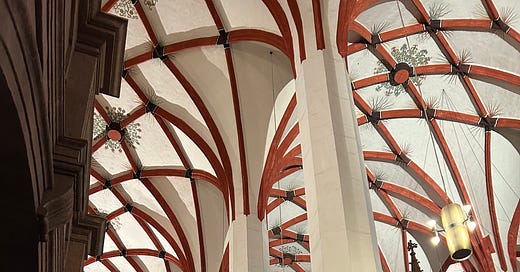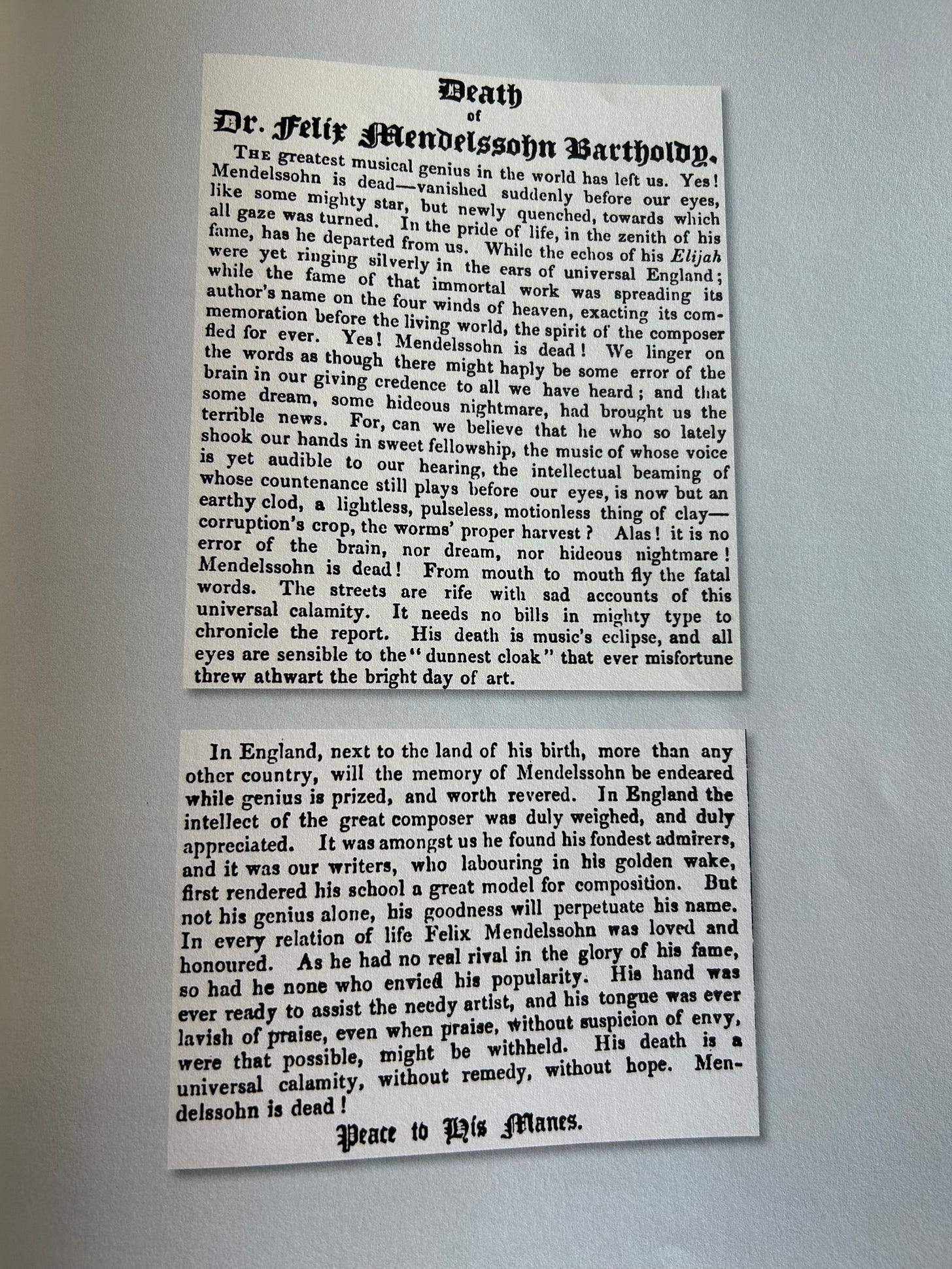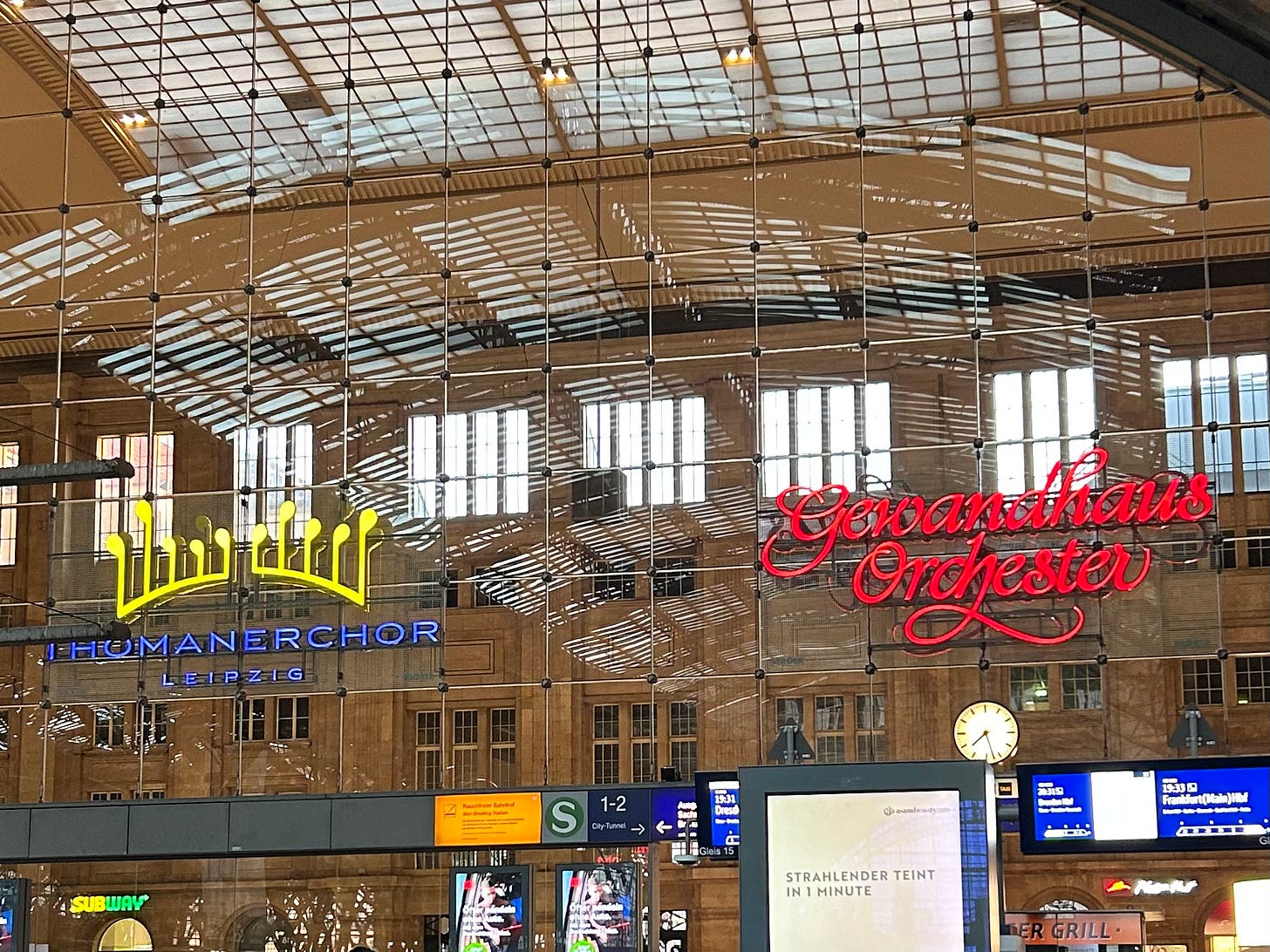At home with Bach
Hearing Bach’s St John Passion in the composer’s own church was a concert of a lifetime
I didn’t think Bach would stick a knife in my guts and twist it, but that’s what happened last night in the Thomaskirche in Leipzig. Maybe it was because I’d confused myself about which church it was in and ended up running there with two minutes to spare. Maybe it was because I’d come to Leipzig specially and for a few moments I thought I’d missed it.
But mainly, I think it was down to Bach, the Gewandhaus Orchestra and the significance of the venue – Bach was Kantor there from 1723 to 1750. The silence of the cavernous space was rent by the throbbing double bass heartbeat, the piercing oboe suspensions twisting above, violins roiling like an ocean beneath this mighty but agile man-o'-war, Andreas Reize’s no-nonsense pace signalling the inevitability of both music and narrative. Even as it took me a moment to adjust my hearing to the distant sound from the back of the church, my response was visceral, eyes automatically lifting to the vaulted ceiling up to which Bach himself must have looked, stomach churning and eyes stinging.
And so it went on, aria after aria for two hours without interval (in the 1724 version) making me oscillate between emotion and awe. I think of the St Matthew Passion as having more memorable tunes, but this was a reminder that every aria in St John is a little masterpiece, the cumulative whole superbly varied and paced – and both draining and uplifting. The soloists were first rate, Julian Prégardien controlled but compelling as the Evangelist and Tobias Berndt beautifully rich, and it was worth the trip to Leipzig alone just to hear the infinity of colour and meaning Andreas Scholl can create in one long-held note.
The fast music zinged, the pretty numbers charmed, the dramatic arias punched, and apart from the exquisitely refined playing throughout, the whole thing swung – phrasing just slightly off kilter, but perfectly formed, full of life and breath. It’s the hardest thing for classical musicians to do well, trained as they are to keep time, but with these orchestral players it seems to be in their blood. We talk about authenticity in music, but this is hyper-authenticity. It’s one thing to research traditions from original documents and listen to people who have come before, but this playing has been handed down through generations of Leipzig musicians, and it sounds like it.
This was brought home to me by my visit earlier in the day to the museum in what was once the home of Mendelssohn. He moved to Leipzig to take up the position of Musical Director of the Gewandhaus in 1835 and became a hugely influential figure in the city’s music life. It’s well known that he revived Bach, conducting the first performance of the St Matthew Passion in Berlin in 1829, but the exhibition is at pains to point out that it was actually his great-aunt Sara Levy, who had studied with Johann Sebastian Bach’s son Wilhelm Friedemann, who had introduced Mendelssohn into the ‘Bach cult’. That’s some lineage.
Mendelssohn only lived in the house for the last two years of his life (he died in 1847) but compared with the Beethoven Haus (see my previous article), there’s more of a sense of the Mendelssohn family actually having lived there, given that he was an adult, with several rooms reconstructed from paintings, some of the original furniture and a beautiful staircase. There are also some accomplished paintings from his European travels, and the obligatory quills.
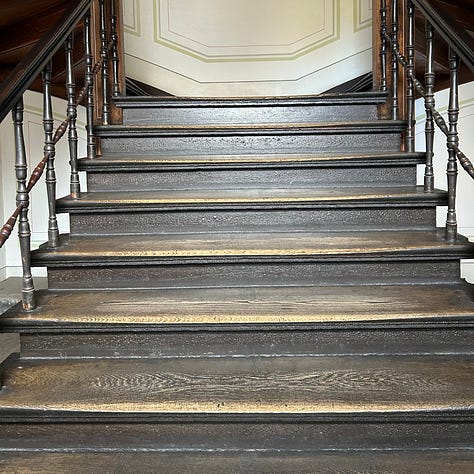

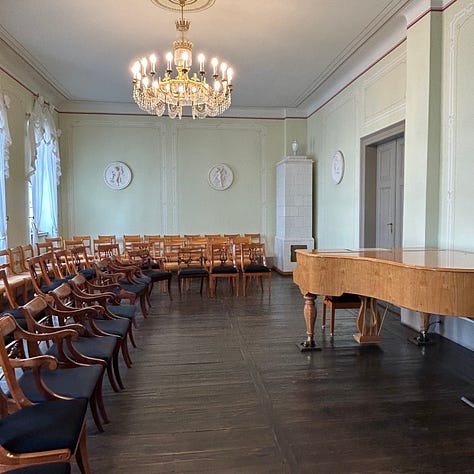

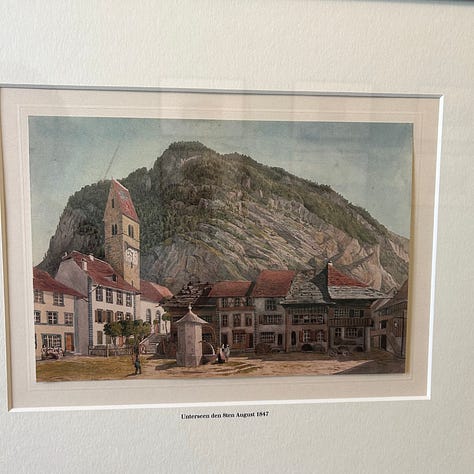
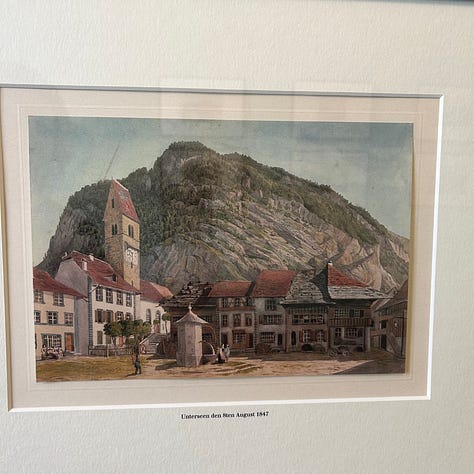
Now, I know that yesterday I was writing about how much I love Beethoven, but the truth is that if I had to answer the question about who I would choose to have dinner with, it would always be Mendelssohn – his sweetness, warmth, intellectual curiosity would make him a perfect companion. All of these things come through in the exhibits, which include English translations of letters between different members of the family.
One obituary of him, written in the English magazine The Musical World is particularly moving, declaring England’s particular loyalty to him and concluding, ‘In every relation of life Felix Mendelssohn was loved and honoured. As he had no real rival in the glory of his fame, so had he none who envied his popularity. His hand was ever ready to assist the needy artist, and his tongue was ever lavish of praise, even when praise, without suspicion of envy, were that possible, might be withheld.’ It ends rather hysterically: ‘His death is a universal calamity, without remedy, without hope. Mendelssohn is dead!’
The exhibition gives an honest picture of the family dynamic, and devotes, quite rightly, a whole floor to Fanny. Her mother taught her the piano at first and noted her ‘Bach fugue’ hands. Fanny and Felix had the same training, and Fanny was every bit her brother’s equal both as a performer and composer, but it seems that her father stopped her from taking music seriously. Even in the context of the times, there is a fairly damning letter in which he admonishes her that ‘Music may perhaps one day be his profession, but for you it can and should only ever be an embellishment.’ He praises her for ‘taking the pleasure in the applause he has elicited, and which in his place you would also have been able to earn for yourself. Persevere with this disposition and demeanour; they are feminine traits, and only what is feminine is becoming to a woman and rewards her endeavours.’ I had to stifle a groan reading it in the museum.
Rather more surprising to me is the fact that Mendelssohn seems to have agreed with his father and although the two siblings were incredibly close, both personally and musically, he could be very negative about her. In one set of correspondence between them, she tells him she’s going to go ahead and get her choral music published even though he’s been rude about them and battered her confidence. He subsequently sends back his approval.
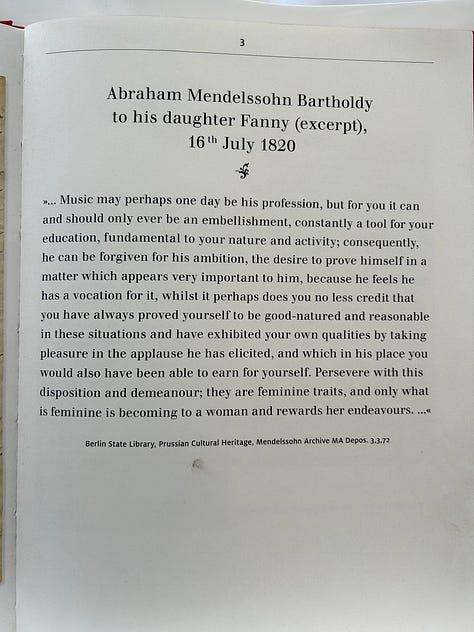
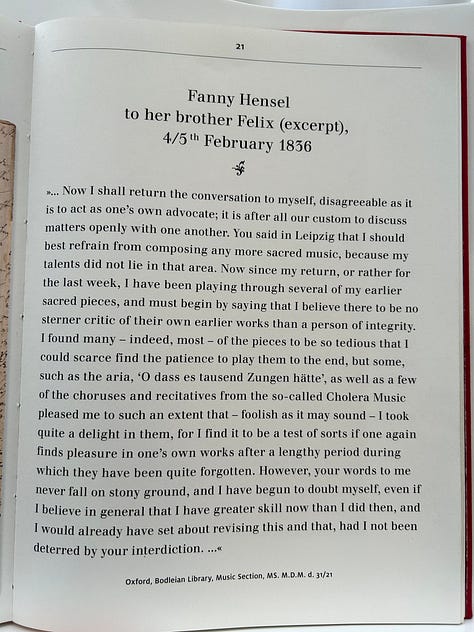
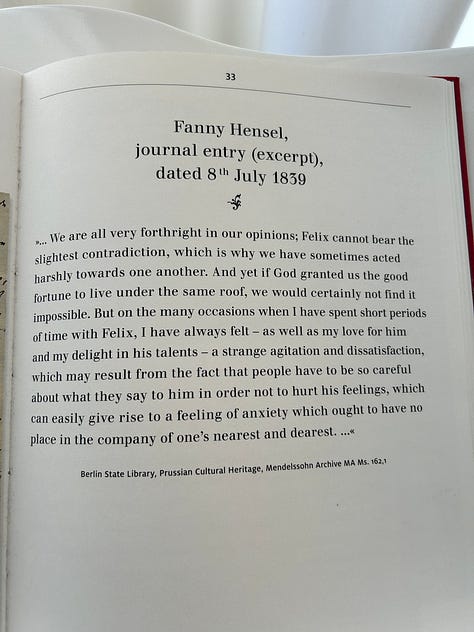
Another interesting insight is her diary entry saying, ‘Felix cannot bear the slightest contradiction, which is why we have sometimes acted harshly towards one another… on the many occasions when I have spent short periods of time with Felix, I have always felt – as well as my love for him and my delight in his talents – a strange agitation and dissatisfaction, which may result from the fact that people have to be so careful about what they say to him in order not to hurt his feelings, which can easily give rise to a feeling of anxiety which ought to have no place in the company of one's nearest and dearest.’
The museum itself came about largely through the energies of Kurt Masur, who was Kapellmeister of the Gewandhaus Orchester from 1970 until 1996, and whose funeral was held in the Thomaskirche in 2015. An exhibition on the third floor of the Mendelssohn Haus tells his story (including his political engagement in intervening to negotiate during anti-government protests in 1989) and displays his musical scores.
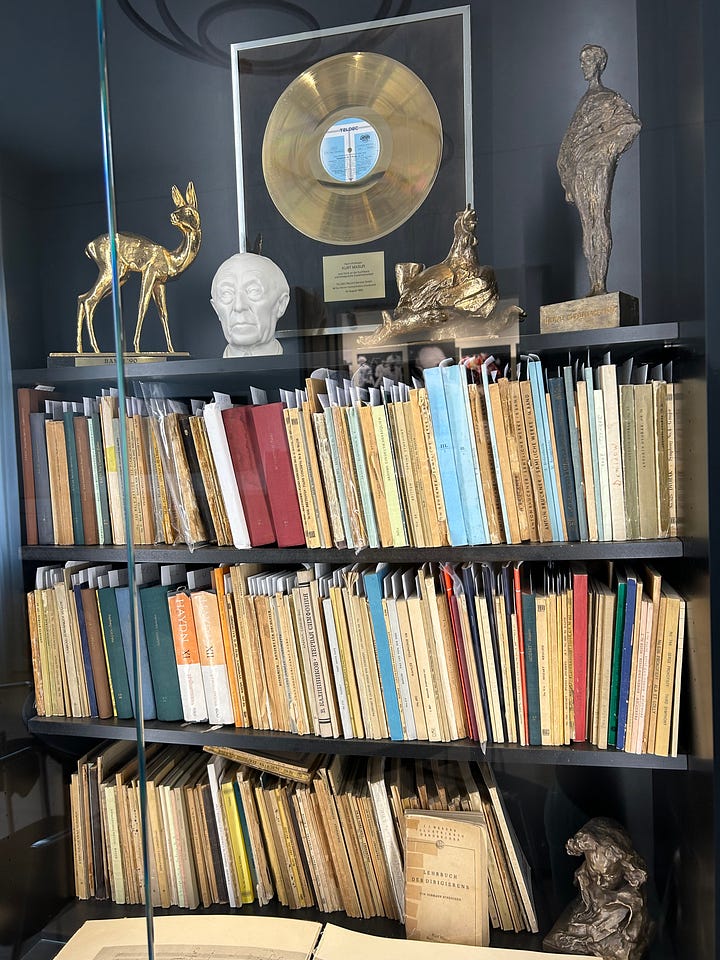
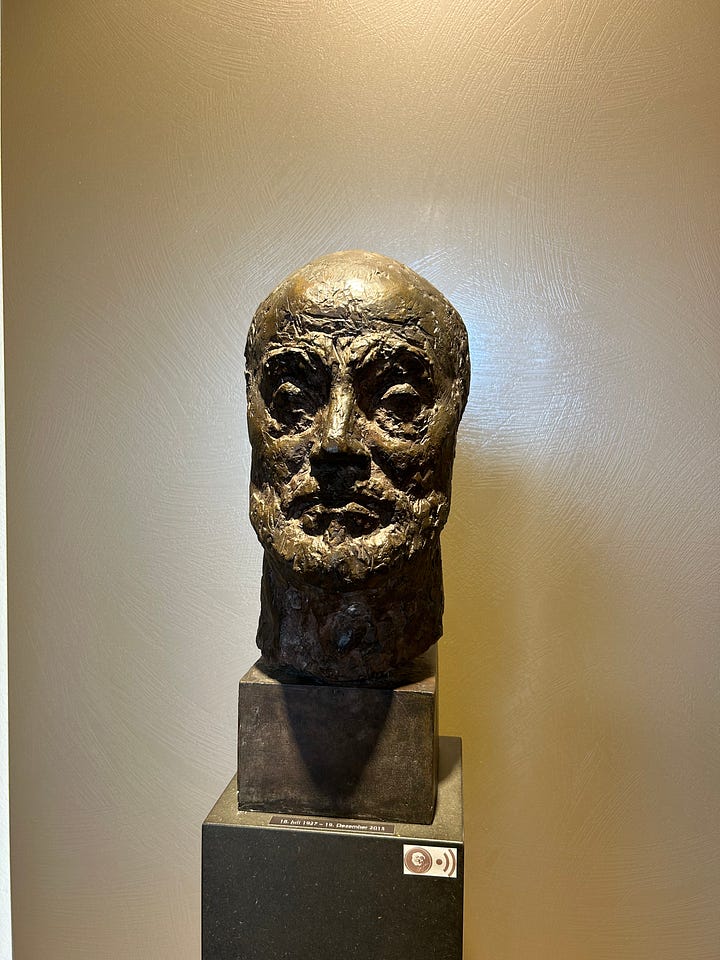
The first thing one sees getting off the train at Leipzig Bahnhopf is the bright lights of a sign for the Gewandhaus and Thomanerchor. With a musical history this rich, it’s not surprising that the city feels such pride.

